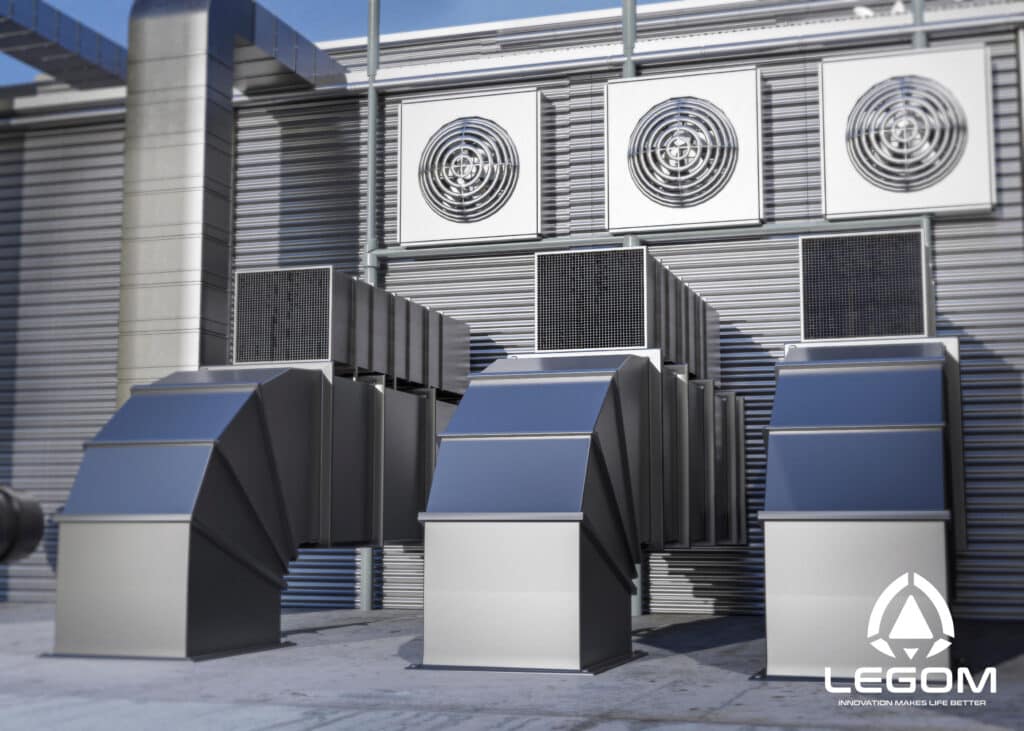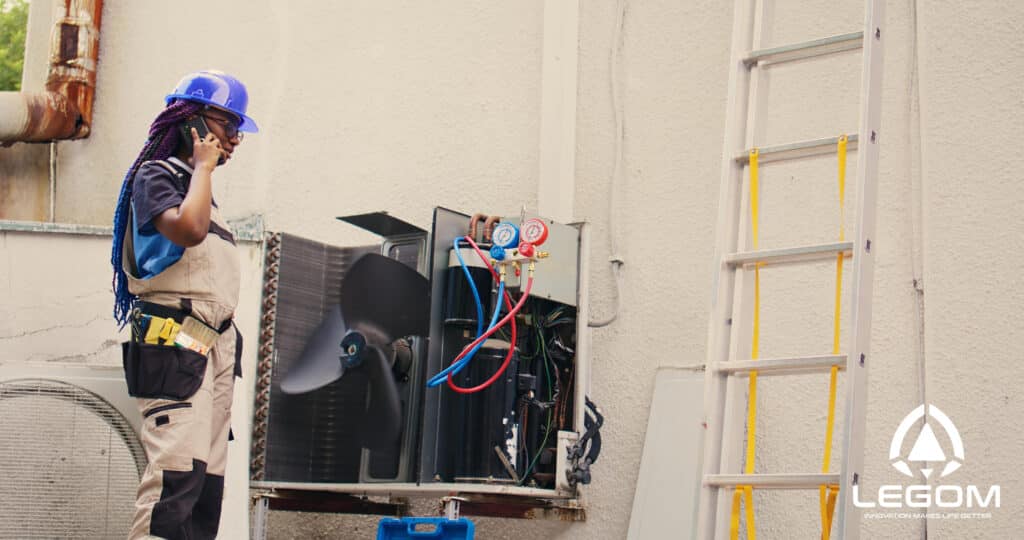
Some people expect natural ventilation to maintain comfort in their home. They also expect that opening windows and doors will allow cool air to flow instantly to every corner of the room. Additionally, they hope to achieve indoor comfort without relying on HVAC products. However, achieving comfort with natural ventilation alone is highly challenging in most situations and locations. Extreme weather conditions and pollution issues often increase the need for HVAC products. Therefore, understanding HVAC systems is essential to achieve the comfort we seek
Nearly all homes and commercial buildings require assistance from heating, ventilation, and air conditioning (HVAC) systems to provide balanced comfort. The earth is getting hotter due to the cracking and breaking of the ozone layer. People who dream of sustainable living for a longer period need an HVAC systems for homes, offices, and commercial buildings. This system helps buildings heat or cool the air, regulate humidity, and filter particles from outside so that the indoor space becomes more suitable from a health perspective.
There are various types of HVAC systems that you can choose according to your needs and many manufacturers in China create systems with cutting-edge technology.
Contents
What is HVAC and HVAC Components
HVAC is an abbreviation for Heating, Ventilation and Air Conditioning any type of cooling and heating system that can change the temperature and humidity inside a room is an HVAC system. Many homes and offices apply this system because it is beneficial in improving indoor air quality through mechanical ventilation and filtration.
HVAC systems generally include various components, including central AC units, furnaces, ductless mini-splits, and boilers. These systems are crucial for maintaining comfortable indoor environments in both residential and commercial settings. In commercial buildings, HVAC systems are particularly important for large-scale cooling and heating operations, ensuring optimal comfort and air quality for occupants.
There are several important components in the following HVAC system:
Thermostat: The Control Hub
Think of the thermostat as the brain of the HVAC system. It maintains indoor temperatures based on user-defined settings, automatically adjusting operations to achieve and hold the desired temperature. Modern thermostats—especially smart and programmable ones—can be fine-tuned to reflect different occupancy patterns throughout the day, maximizing energy savings. For example, some models allow remote adjustments, ensuring comfort and energy efficiency even when users are away from home.
Air Ducts: The Circulatory System
Air ducts are vital in channeling conditioned air throughout a building. Efficient ductwork ensures that heated or cooled air is evenly distributed. Sealed and insulated ducts are crucial for minimizing energy loss, as air leakage can drive up heating and cooling costs by up to 30%. The system includes both a supply air duct for distributing fresh air and a return air duct to circulate air back to the central unit, creating a seamless flow that contributes to consistent indoor comfort.
Condenser: The Cooling Component
The condenser, located in the outdoor AC unit, is where the cooling magic happens. It uses refrigerant to absorb heat from indoor air, then expels this heat outside. High-quality condensers, paired with eco-friendly refrigerants like R32, allow for a quieter, energy-efficient cooling experience. According to the U.S. Environmental Protection Agency (EPA), transitioning to refrigerants with a lower global warming potential (GWP) can reduce a system’s environmental impact by up to 80%.
Air Handler: The Indoor Engine
The air handler houses critical components like the blower motor and fan, pushing conditioned air into the ducts. Inside, the evaporator coil cools the air before it circulates, ensuring optimal comfort throughout the building. Proper maintenance of the air handler, such as regular cleaning of filters, is key to prolonging the system’s lifespan and enhancing air quality.
Ventilation: Ensuring Fresh Air Flow
Ventilation is essential for replacing stale indoor air with fresh, filtered air, preventing pollutants from accumulating. Mechanical ventilation options in modern HVAC systems provide precise control, ensuring only clean, quality air flows into indoor spaces. In areas with high air pollution, advanced filtration systems are often integrated, effectively reducing allergens, dust, and harmful particles.
Cooling and Refrigerants
Cooling in HVAC systems is achieved through refrigerants that absorb and transfer heat. High-quality, eco-friendly refrigerants, such as R32 refrigerants, are increasingly used due to their low environmental impact. These refrigerants efficiently cool indoor spaces, making them ideal for energy-conscious and sustainable building projects.
Humidifier and Dehumidifier
Depending on the climate, indoor air may require humidification or dehumidification to maintain comfortable and healthy moisture levels. Humidifiers add moisture to the air in dry environments, while dehumidifiers reduce excess humidity in damp climates, preventing mold growth and improving indoor air quality.
Key Benefits and Applications of Advanced HVAC Systems

An effective HVAC system does more than maintain indoor temperatures; it actively enhances operational efficiency and supports sustainability initiatives. Here are some primary applications:
Process Optimization and Real-Time Adjustments
Advanced HVAC systems utilize smart technology to monitor indoor conditions and automatically adjust performance. This ability to respond in real-time maximizes efficiency, reducing energy use and utility costs. By analyzing live data, the system can fine-tune heating and cooling output, keeping spaces comfortable while minimizing waste. Automated adjustments also help extend the lifespan of the HVAC equipment.
Predictive Maintenance for Long-Term Savings
Predictive maintenance capabilities, enabled by sensors and IoT connectivity, allow HVAC systems to monitor equipment health and prevent unexpected breakdowns. By detecting anomalies early, the system can alert technicians to perform maintenance, avoiding costly repairs and downtime. Data from the U.S. Department of Energy suggests that predictive maintenance can reduce repair costs by up to 30% and extend equipment life by 20-30%.
Enhanced Energy Management and Cost Efficiency
In commercial buildings, HVAC systems account for a significant portion of energy consumption. By monitoring and optimizing energy use, these systems help facility managers identify areas for improvement. Data collected over time can reveal patterns, guiding strategies to minimize usage during non-peak hours. According to the U.S. EPA, well-optimized HVAC systems can save up to 20% on annual energy bills, a substantial cost reduction for large facilities.
Remote Monitoring and Control
With IoT integration, HVAC systems can now be remotely monitored and controlled, offering a level of convenience that reduces the need for physical site visits. This capability is particularly valuable in commercial settings, where real-time oversight enables facility managers to respond swiftly to any issues. Remote control also supports smarter energy management, as adjustments can be made from anywhere, ensuring optimal performance even when the building is unoccupied.
Improving Indoor Air Quality and Health
High-quality HVAC systems enhance indoor air quality by filtering out pollutants, dust, allergens, and pathogens. For those in urban areas or regions prone to allergens, systems with HEPA-grade filters can significantly reduce airborne irritants, contributing to a healthier indoor environment. Improved air quality has a direct impact on occupants’ health, reducing respiratory issues and promoting well-being.
Efficient Resource Allocation and Asset Management
Large facilities often face challenges in managing HVAC assets effectively. Advanced systems equipped with tracking technology enable managers to monitor usage patterns, optimize resource allocation, and prevent equipment shortages. Efficient asset management not only saves costs but also enhances productivity by ensuring that HVAC systems are always available when needed.
Conclusion
HVAC systems are integral to creating comfortable, energy-efficient, and sustainable indoor spaces. As global attention shifts toward reducing environmental impact, HVAC technologies—particularly those employing eco-friendly refrigerants and smart automation—are vital in achieving both comfort and sustainability. By choosing high-quality, efficient HVAC systems from reputable HVAC manufacturers like Legom, building owners can make meaningful contributions to environmental responsibility while enjoying the benefits of a modern, adaptable indoor climate solution. Consult with us for your best HVAC systems.
